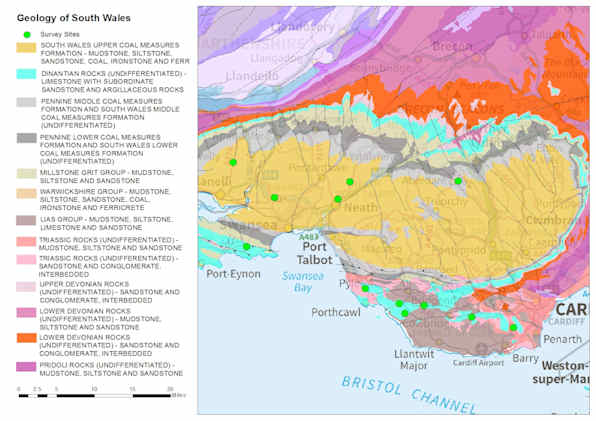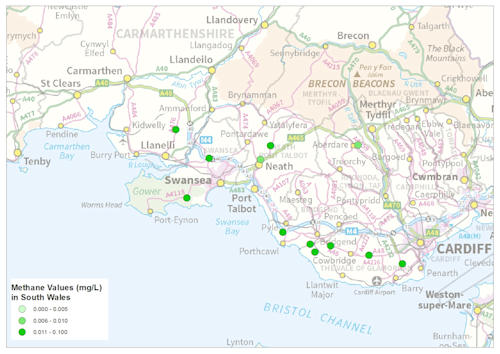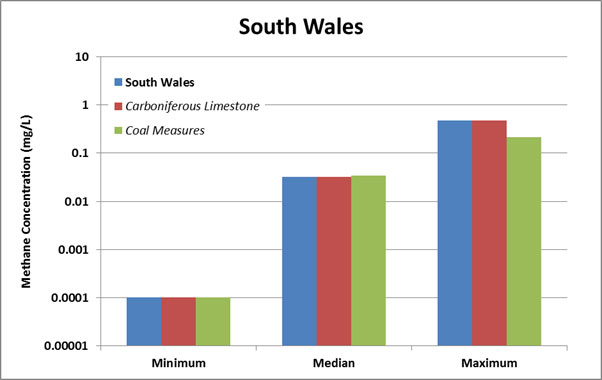South Wales
Regional summary
In South Wales, 25 sites have been sampled for methane in the two main aquifers, the Carboniferous limestone and the Coal Measures sandstones.
- In the UK, the Carboniferous limestone is a principal aquifer and groundwater flows rapidly through a network of fractures, conduits and caves. In South Wales, this aquifer is not used for public supply, although it provides many private supplies. The Carboniferous limestone outcrops south of the coalfield and has a maximum thickness of 425 m.
- The Coal Measures sandstones in South Wales are very hard and dense, and groundwater will only tend to flow through fractures. Due to mining subsidence, there are zones of increased fracturing, and therefore increased water storage and flow. This aquifer is classed as a secondary A aquifer by the Environment Agency and is not used for public water supply.
The shale unit present in this area is the Marros Group, which consists of siliceous mudstones and local quartz rich sandstones and conglomerates. The maximum height of the top of the Marros is about 400 m above OD at outcrop in the west, but deepens towards the east to reach depths of over 2500 m below OD.
Methane in UK groundwater results
These summary results are from single sampling visits to each site as part of the methane baseline project. The data are summarised for the South Wales region as a whole and also for individual aquifers, where enough data are available.
| Area | Concentration (mg/l) | Number of samples |
||
|---|---|---|---|---|
| Minimum | Median | Maximum | ||
| South Wales | <0.0001 | 0.032 | 0.483 | 25 |
| Carboniferous limestone | <0.0001 | 0.032 | 0.483 | 11 |
| Coal Measures | <0.0001 | 0.034 | 0.216 | 13 |
Baseline groundwater quality data
No baseline data are available for the Carboniferous limestone or the Coal Measures in this region.
Contact
Please contact BGS Enquiries for more information.










